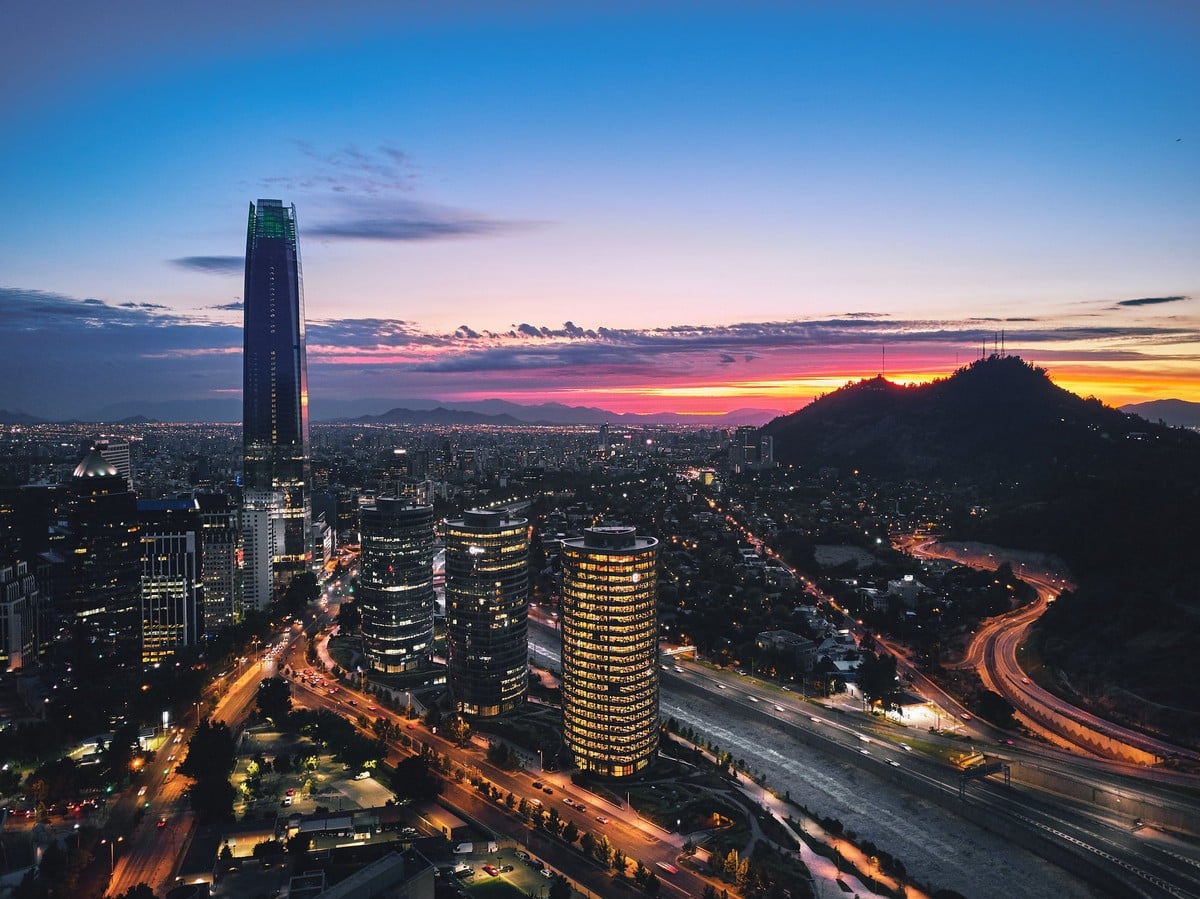Chile, one of the longest countries in the world, has a fascinating geography. It extends over four thousand kilometers from Peru to Cape Horn along South America’s western seaboard. Its remarkably narrow width and expansive length provide diverse cultural experiences throughout its terrain. In most places, the country’s width stands at only 110 miles, although it reaches a maximum of 217 and a minimum of 9.6 near Puerto Natales. Peru and Bolivia border Chile to the north, while Argentina lines its lengthy eastern side and the Pacific Ocean to the west.
Chile is known for its endless destination possibilities, majestic natural wonders, and rich culture. From its colorful history to its mouthwatering culinary landscape, this South American nation is sure to captivate visitors with unique experiences on every level. There’s always something on offer in this spectacular South American nation.
Tallest Building in South America
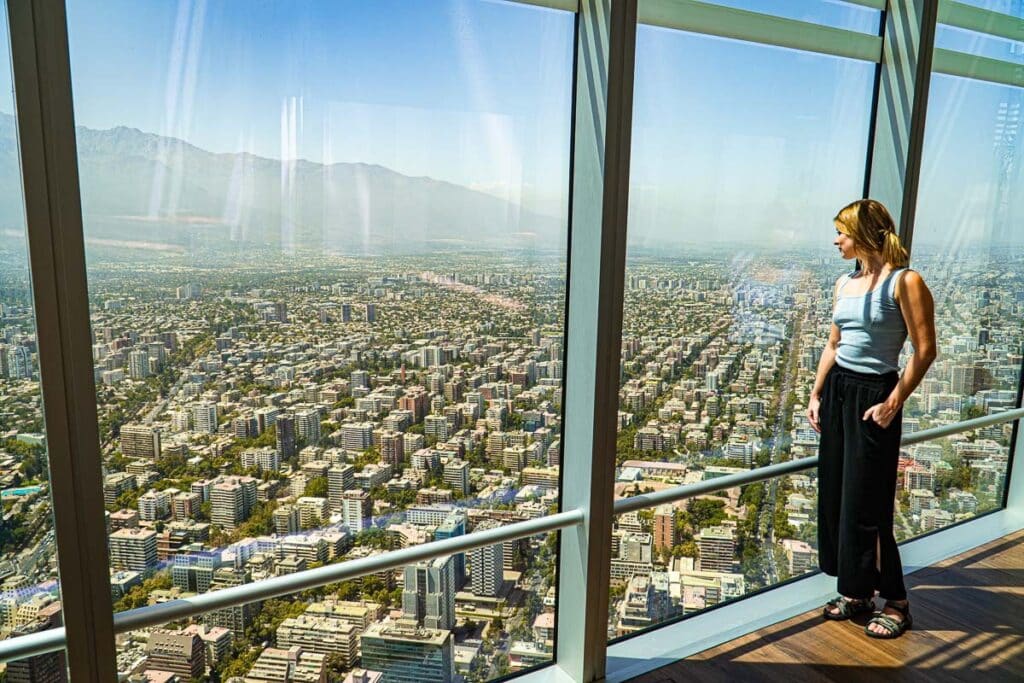
Santiago is well-known for its stunning landscapes, fascinating culture, and bustling cityscape, but did you know it’s home to Latin America’s tallest building? Gran Torre Santiago stands 300 meters high and can be spotted in the skyline. Also known as the Costanera Center Torre 2, the 64-story skyscraper offers an incredible view of Santiago and beyond. Make your way up to the newly opened observatory deck to take in all these amazing city offers, from the quaint Italian-influenced neighborhoods of Barrio Yungay and Bellavista to breathtaking views of the Andean Cordillera in the distance.
Moving an Entire House with Minga
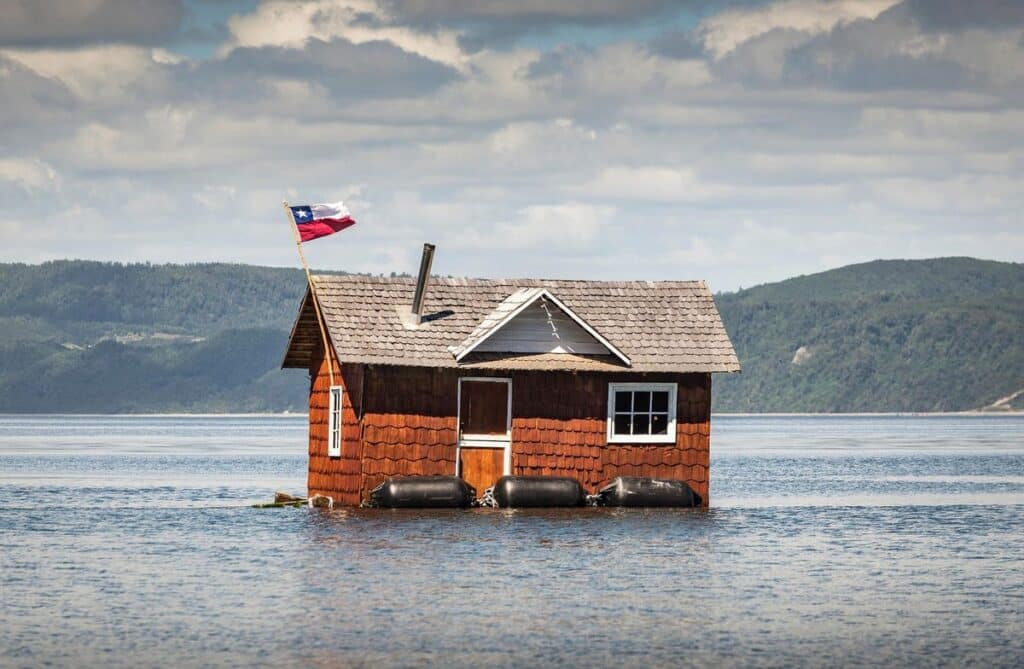
The Minga is the perfect example of communal effort and cooperation, showcasing the community’s strong ties. Practiced only in the islands of the Chiloe archipelago, the tradition involves neighbors getting together and moving an entire house when a family decides to relocate. The process begins by removing the wooden structure from its foundations before attaching it to either a group of oxen or logs that will pull it to its new location or tie it to a boat to be floated across the water.
Driest Desert in the World
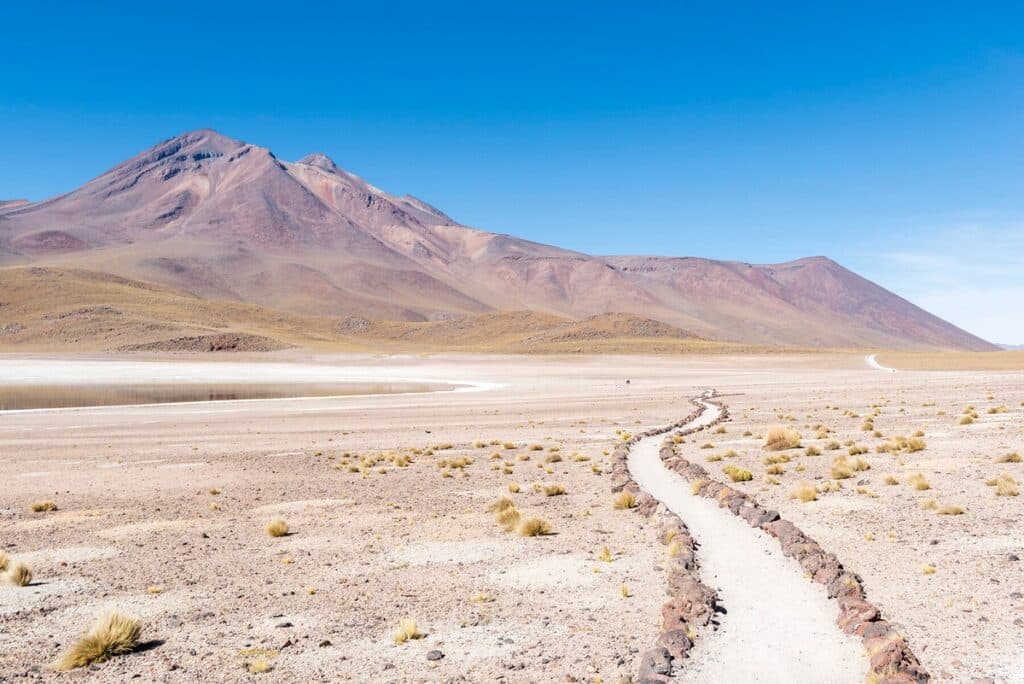
The Atacama Desert in Chile is a unique natural marvel. Located at an elevation of 7,500 feet above sea level and covering an area of over 363,000 square kilometers, the Atacama Desert is the driest place on Earth. Its dryness has earned it the title of the oldest desert on Earth, with some parts having never experienced a single drop of rain. Its haunting beauty is something to behold, with its surreal landscape stretching along a 1,000-kilometer-long strip between the mountains and the Pacific Ocean.
World’s Biggest Swimming Pool
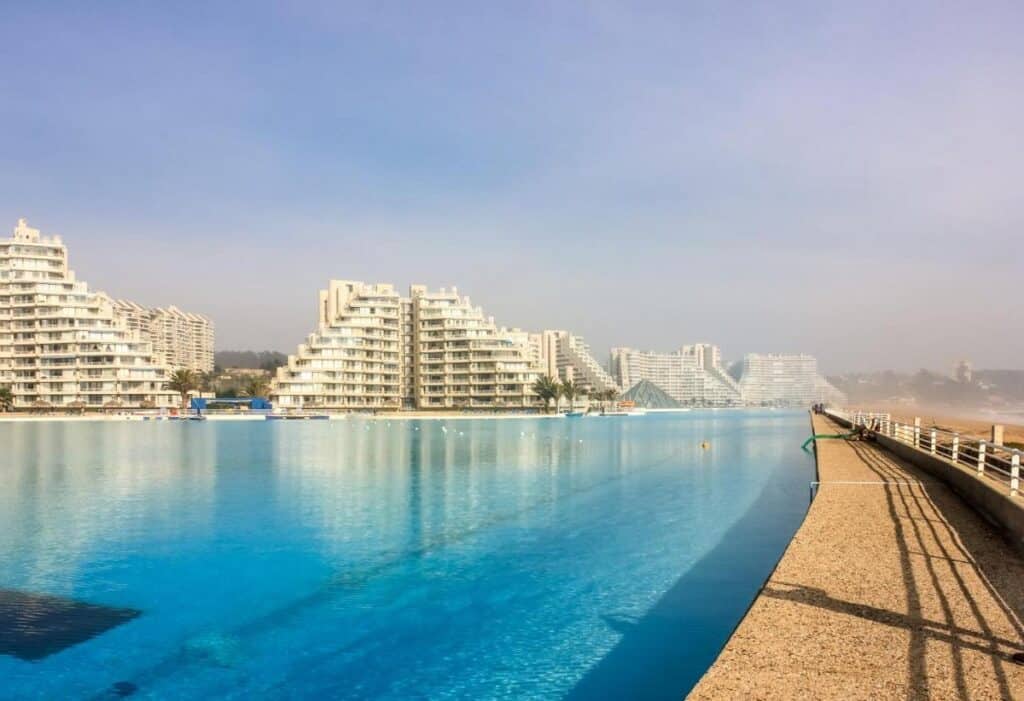
Algarrobo City on the Chilean Pacific coast is home to a spectacular sight. The Guinness Book of Records recognized the San Alfonso del Mar Resort’s swimming pool as the largest in the world. It covers an astonishing eight hectares with a length of 1,013 meters. A unique filtration system was installed to pump salt water from the ocean into the pool, and it took five long years to build this luxurious landmark. This great investment come at a hefty $1 billion, but inarguably well worth it as visitors revel in the beauty of this giant oasis.
Largest Earthquake Ever Recorded
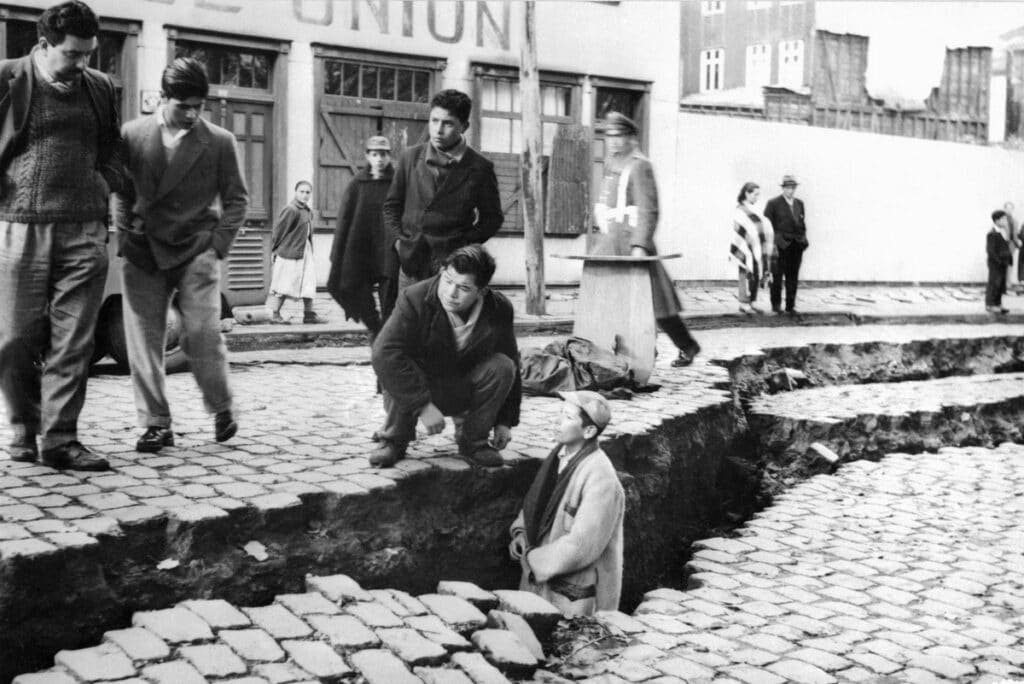
Chile is renowned for its stunning scenery, but not everyone knows the country sits on the Pacific Ring of Fire, a location prone to seismic activity. In 1960, this area came into sharp focus when a 9.5 magnitude earthquake shook Chile near Valdivia, lasting between 11 and 13 minutes, making it the largest earthquake ever officially recorded. Sadly, thousands of people died due to the quake’s severity and resulting tsunami.
World’s Oldest Known Mummies
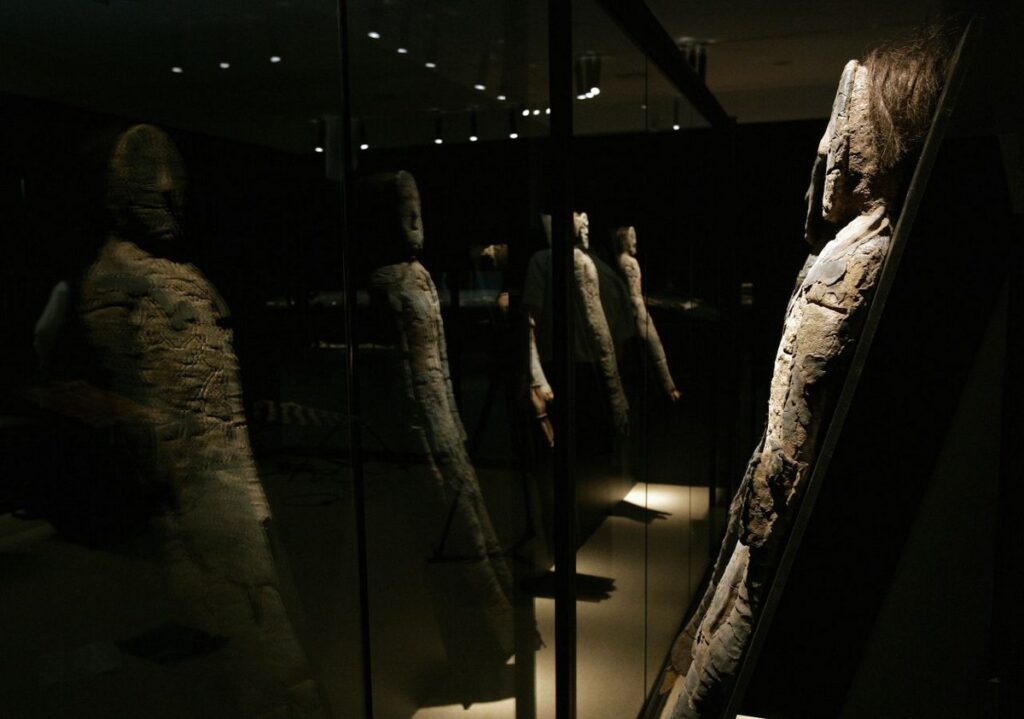
The Chinchorro culture introduces us to a fascinating and unique culture of mummification that pre-dates the ancient Egyptians by two thousand years. This ancient practice, which is thought to have begun around 5050 BC, has left archaeologists stunned by the sheer volume of remains found at 282 burial sites along the coasts of Peru and Chile. Of these 282 sites, 149 are believed to have been mummies created deliberately by Chinchorro artisans, while the rest had fallen victim to natural decay.
Collection of the World’s Largest and Active Volcanoes
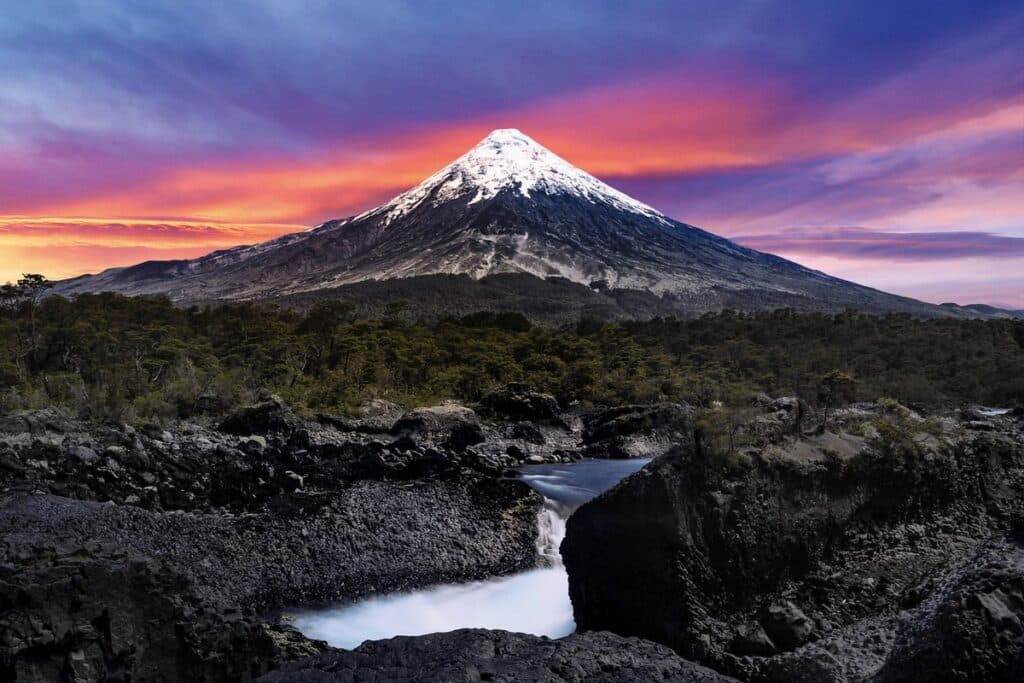
Chile is one of the most geologically active nations, boasting over 1,300 unique volcanoes. Cerro Arul, Cerro Hudson, and Villarrica are the nation’s historically notable volcanoes, displaying their power in subtle seismic rumblings and dramatic eruptions. All three are classified as composite volcanoes, referred to as stratovolcanos, due partly to their ability to build up large amounts of ash and lava quickly.
Largest Percentage of Endemic Species in the World
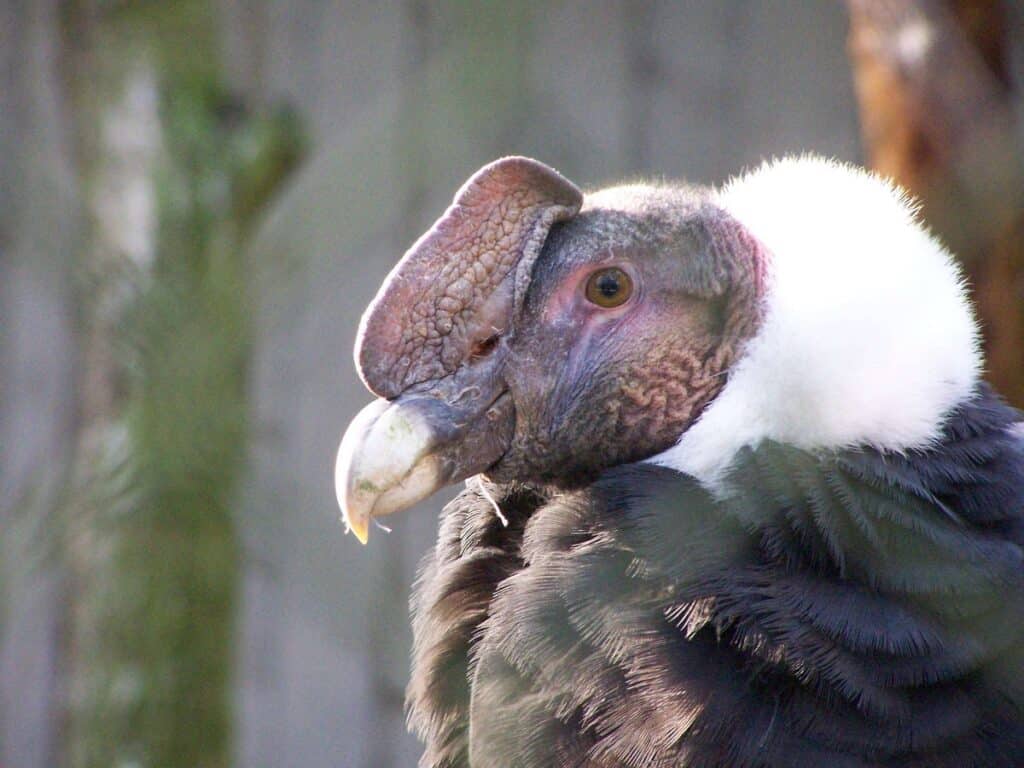
Chile stands out amongst other countries by having more endemic species than any other nation. Endemic species play an important role in maintaining and further diversifying Chile’s already impressive array of plant and animal life. Although Chile may not have particularly high numbers of species overall, its 50% rate of endemic species is incredibly noteworthy, offering a unique insight into the biodiversity in the region. Animals specific to Chile include the Juan Fernandez Fur Seal, the Chilean Woodstar hummingbird, and the Southern Viscacha. You may also spot wild horses, llamas, and herds of Guanacos near certain reserves.
Diverse Landscapes of Chilean Patagonia
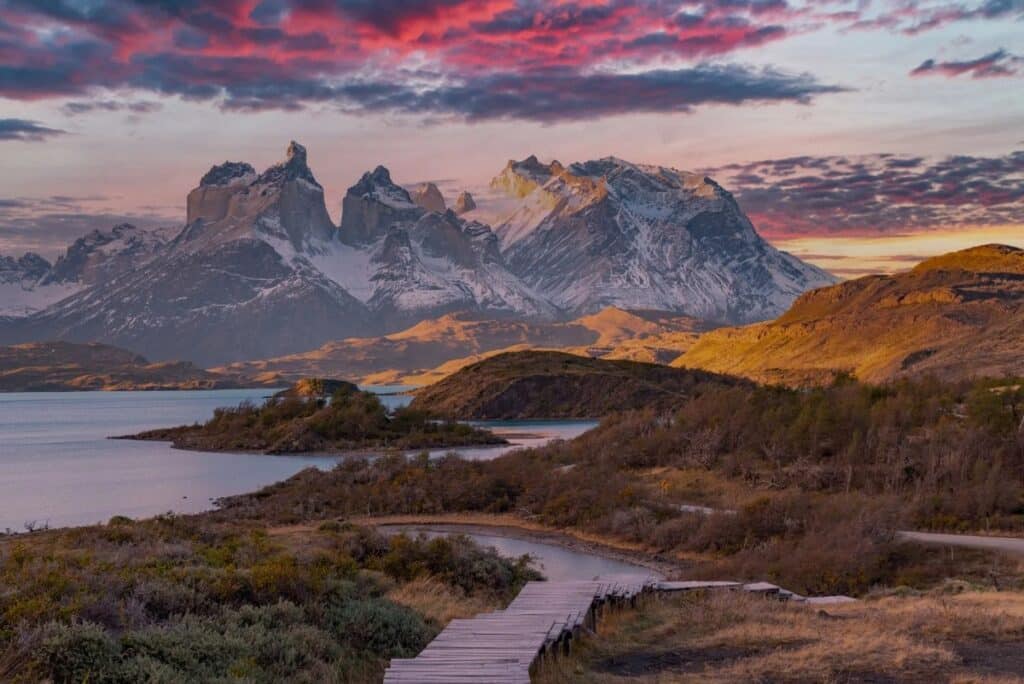
Chilean Patagonia is renowned for its diverse landscapes, from the vast Southern Patagonia Ice Field to the stunningly beautiful Torres del Paine National Park, which is Chile’s most visited park. This paradise for trekking enthusiasts features the well-known W Circuit, a 1,700-mile trek that takes you through some of nature’s most remarkable sites. For an unrivaled experience in culture and adventure, take in all that Chile has to offer by visiting its spectacular southern region.
Mysterious Easter Island
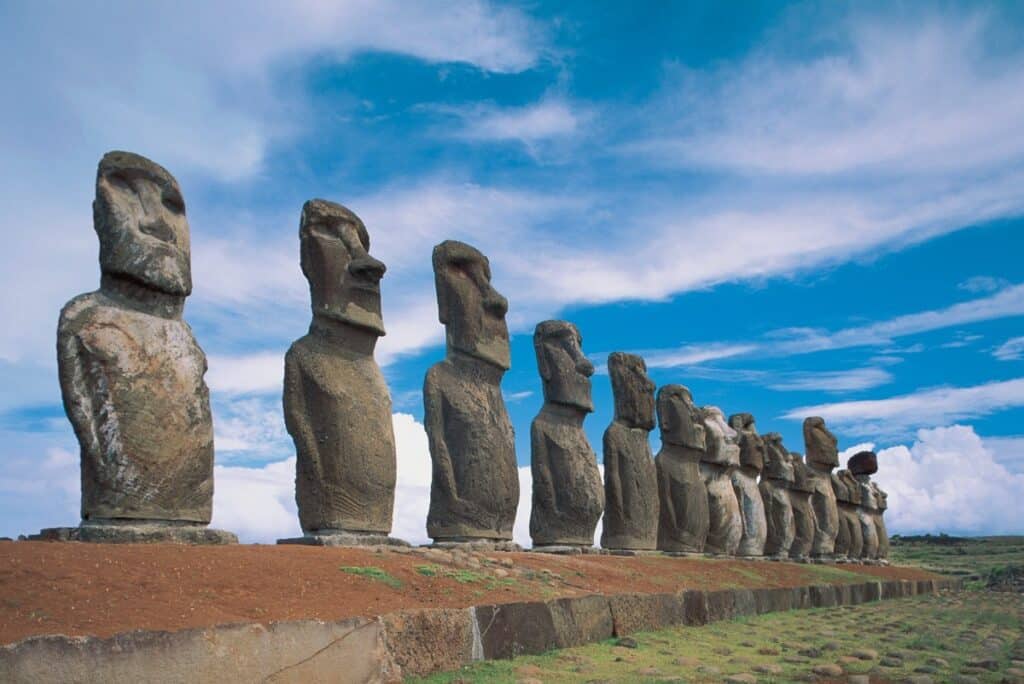
The once remote volcanic island of Easter Island, otherwise known as Rapa Nui, is a charming place off the coast of Chile in Polynesia. The country annexed the island in 1888 and was renamed Isla de Pascua in the late 1700s. During the 1900s, it was used for sheep farming and managed by the Chilean Navy. In 1966 it was opened to the public and became a major tourist destination due to its unique history. Aside from its 900 moai statues created by ancient inhabitants, more than seven kilometers of underground lava tunnels exist on the island.
Emerging Microbrewery Scene

Chile has long been known for its renowned wines. However, the microbrewery scene has recently begun to emerge in the country. Microbreweries have rapidly risen in popularity, and as a result, several craft beer breweries have opened throughout Chile. Most of these new microbreweries can be found in Santiago, where people can explore some of their offerings, such as those from Spot Microbrewery, Cerveceria Kuntsman, Kross Cerveceria, and Cerveza Austral.
Narrowest Country
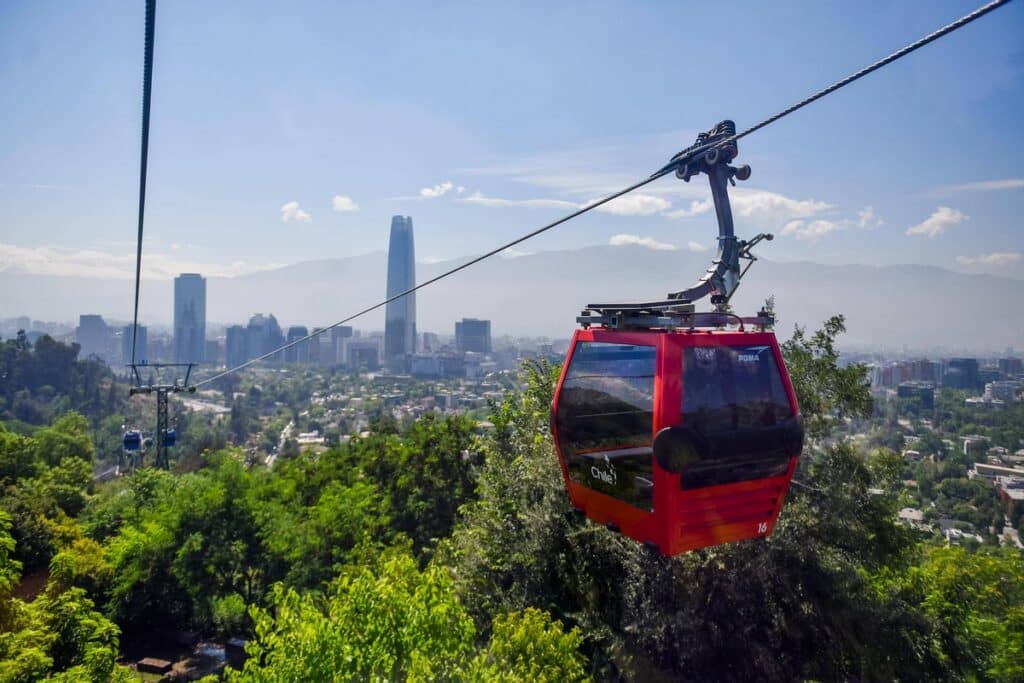
Chile is an impressive example of the world’s diversity. With a length of 2,600 miles stretching from 17 degrees South to 56 degrees South, it’s as long as the United States is wide. Astonishingly, Chile is sandwiched between the towering Cordillera de los Andes Mountains and the beautiful Pacific Ocean and yet is only an average of 110 miles wide – truly making it the narrowest country in the world. Its sheer enormity and latitudinal positioning make Chile a uniquely diverse destination with varying ecosystems from desert to rainforest on its razor thin east-west axis.
Breathtaking View of the Andes
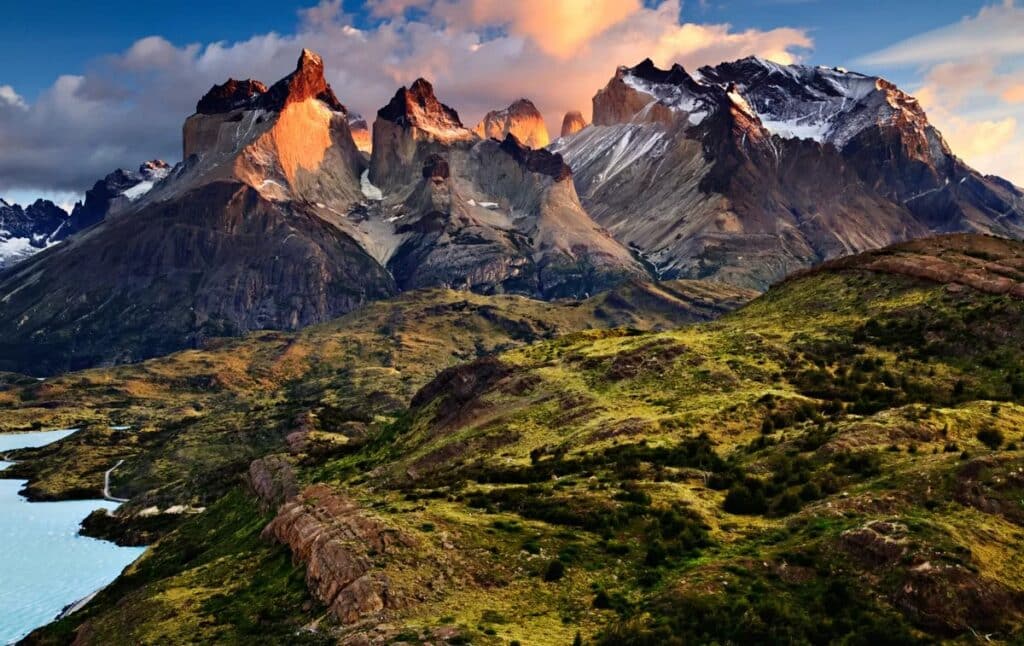
The Andes are a defining feature of the geography of many South American countries, but nowhere is this truer than in Chile. Its grandeur provides breathtaking views for visitors and is also home to 90 active volcanoes and marks the spot where two tectonic plates meet. This latter fact explains the number of earthquakes Chile has experienced over time, some powerful enough to ravage entire cities.
The Mapuche Nation

The Mapuche are a living testament to the strength and resilience of indigenous populations in the Americas, having not just survived conquest by Europeans but maintained their language, culture, and identity to this day. Today, the Mapuche compose 80% of Chile’s indigenous population and 10% of Chilean society. While the Mapuche have ensured that their culture and identity remain alive, they continue to face numerous obstacles in terms of autonomy, respect, and equality in modern-day Santiago.
Nobel Prize Winner Pablo Neruda

Chilean poet and Nobel Prize for Literature recipient Pablo Neruda is an icon of modern Latin American literature. His wide array of universal themes, spanning life and death, love, politics, and even cities with a hint of surrealism, has made him a global superstar. Neruda stands out as an unparalleled figure, representing his homeland. Aside from his writings, three of his iconic houses in Santiago, Valparaíso, and Isla Negra are worth visiting to see what inspired him during his lifetime.
Economic Reliance on Mining
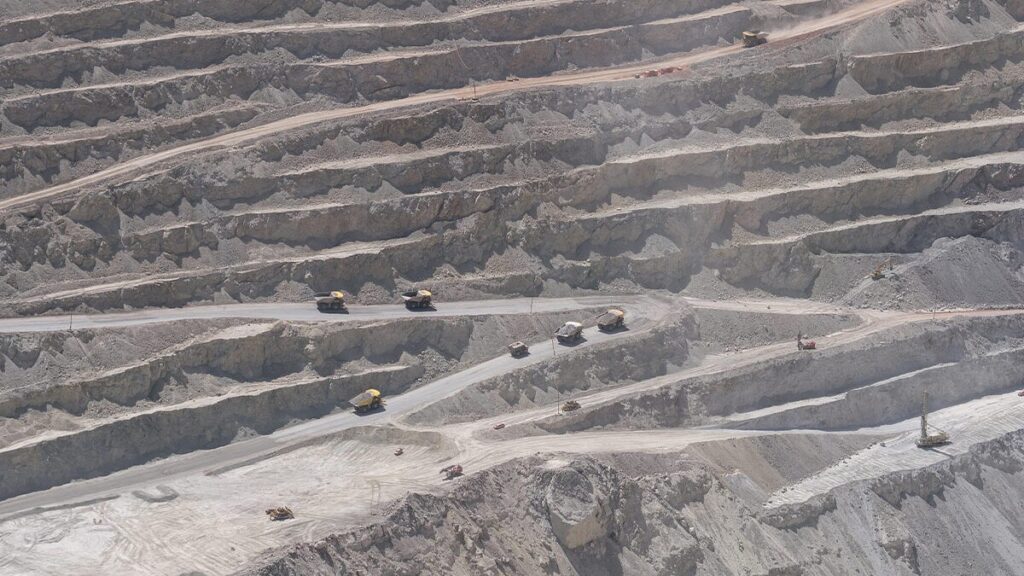
Mining has always been an integral part of Chile’s history and culture. Copper plays a particularly important role in the country’s economy, accounting for nearly half of its exports. As a result, the mining industry has left behind a significant cultural mark across Chile. From Humberstone and Santa Laura Saltpeter Works to Sewell, a mountainside ghost town designated as a UNESCO World Heritage site, Chile’s facilities and structures reflect its long-standing economic reliance on mining.
Chilean Wine
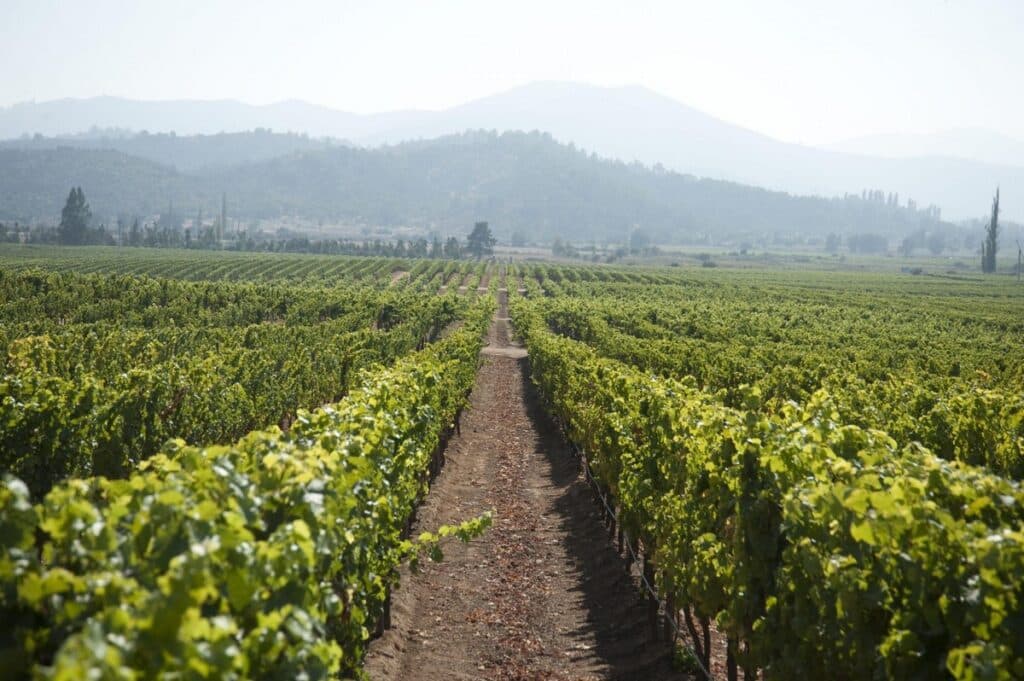
Chile’s long and proud winemaking history stretches back to the 1500s. After the Spanish introduced Vitis vinifera grapes to Chile, it took several hundred years before Chilean wine production gained momentum. This major spike in quality can be attributed to many French families moving to the country, bringing their skills with them. As a result, the Central Valley of Chile offers an ideal topology for winemaking, boasting a Mediterranean climate ideal for grape cultivation.
